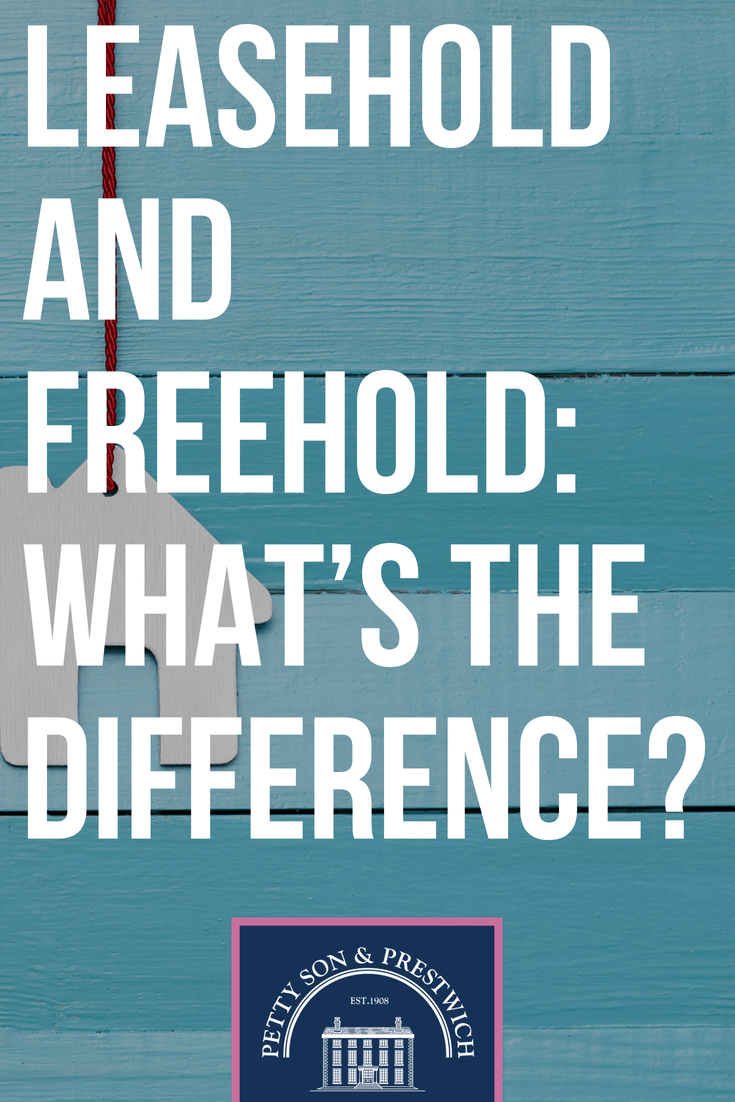Finding out whether a property is leasehold or freehold is an essential part of the buying process, but many people struggle with what the difference between the two actually is. Here we take a look at both types of tenure and explore the implications of each in detail.
Freehold
Probably the more straightforward of the two types of ‘interest in the land’ is freehold. Being the freeholder means that you not only own the bricks and mortar that makes up the property, you also own the land upon which the building stands, too. This is outright ownership and it will be your name that appears on the land registry as the freeholder.
Owning the freehold has several distinct advantages, and for the majority of buyers it is the preferred option. With a freehold property you will not have to deal with a landlord or be required to pay any of the charges associated with having one. No annual ground rent will be due, nor will you have to worry about the property falling into disrepair through the neglect of the landlord.
However, while buying a freehold property has some definite benefits, you will have to shoulder the cost of maintaining both the land and the property yourself. This is something that should be considered prior to purchasing as you will be liable for any repairs that need to be made while you own the freehold.
While it is true that the majority of whole houses on the market are freehold, there are a few exceptions to this rule. Newer schemes, such as shared ownership, have led to some houses being offered as leasehold properties rather than freehold, with housing associations acting as landlords. That being said, if you are simply looking to purchase a house on the open market, the chances are good that it will be a freehold property you will be buying.
Leasehold
Flats and maisonettes across England and Wales are generally offered on a leasehold basis.
When you take on a leasehold property, you own a temporary right to live in the home and occupy the land upon which it sits. This agreement is commonly referred to as a lease and the length for which it runs will be for a set period of time. In the past, leases were usually granted for a fixed term of 99 years; more recently, however, this period is frequently increased to 125 years.
The length of the lease is vitally important and you should keep in mind the fact that you will be taking over the lease from the previous owner when you buy a leasehold property. Lease length can affect your ability to obtain a mortgage and have a considerable impact on the property’s resale value, too.
As a general rule of thumb, look out for a lease that will not drop below the 80-year mark while you are living in the property. It’s worth bearing in mind that you can ask the vendor to extend the length of the lease prior to purchase, and doing so could save you a huge amount of money.
Once you have lived in the property for two years or more, you may be able to obtain an extension to your lease by serving a S42 Notice on the freeholder. This is usually referred to as a Statutory Lease Extension and you can read more about how the process works here.
Conclusion
The key difference between leasehold and freehold properties, then, is the fact that one is held for a temporary period (leasehold) while the other is permanent (freehold). Although the temporary period may last for many years, the fact remains that someone else effectively owns the property and the land upon which it is built.
The reason why this is so important to the purchaser is because the constantly declining lease could be seen as a diminishing asset, whereas a freehold property will hold its value - providing the overall housing market is stable. Having said that, this will only affect properties with shorter leases, as those at the beginning of their lease should perform in pretty much the same fashion as a freehold property.
If you still have questions about the leasehold/freehold conundrum, our team of experts are always on hand to answer your queries. Give them a call today on 020 8989 2091 (Wanstead office) or 020 8504 5403 (Buckhurst Hill).


As Petty’s MD, John steers the ship. He is, however, first to admit that the team around him run the show, and he’s incredibly proud of each and every one of them. Sporty and studious, caring and loyal, John is a father of two wonderful children (and Cooper the dog).
020 3370 8784 / Email Directly